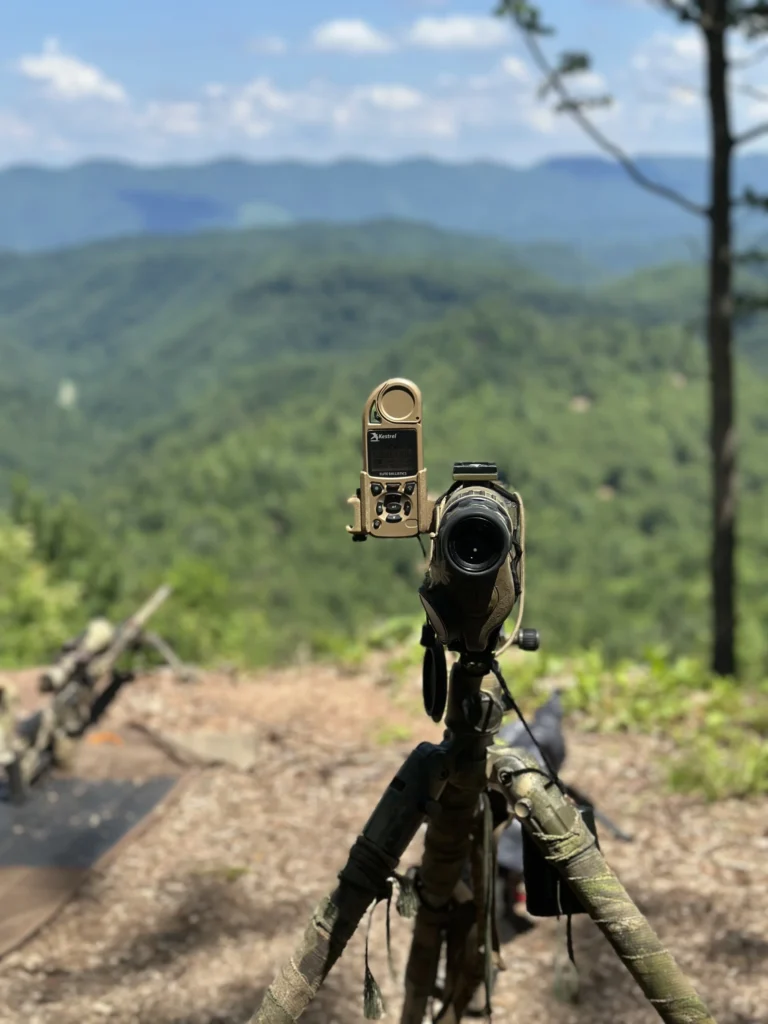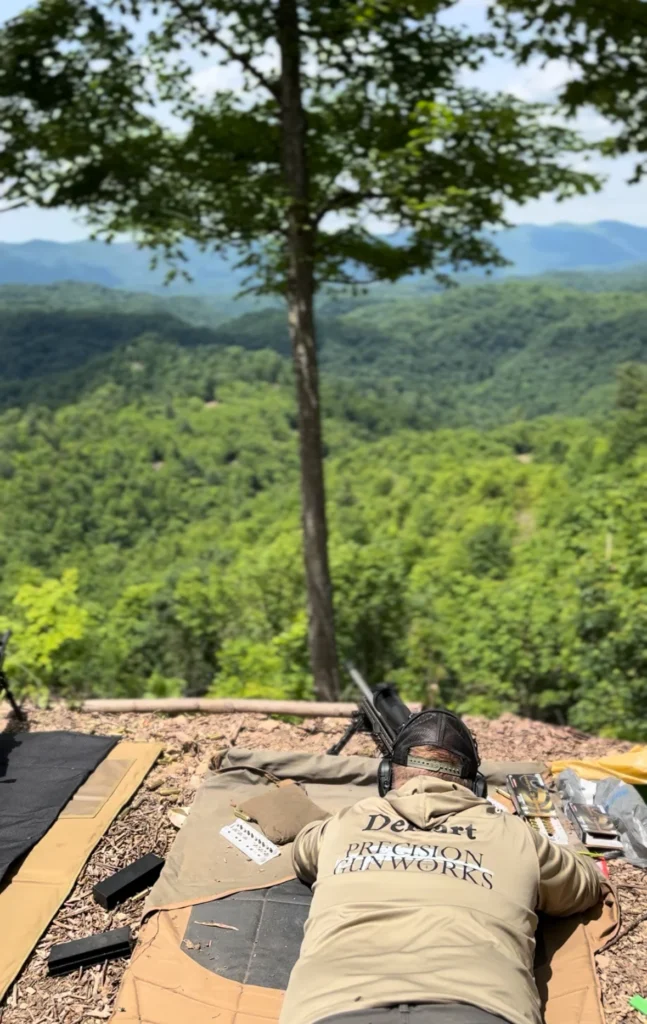If you’ve ever missed a long range shot and blamed your rifle, your ammo, or your scope, there’s a good chance the real culprit was wind. At distances beyond 400 yards, reading the wind becomes one of the most important skills a precision shooter can master. Without it, even the most accurate rifle and perfect load won’t help you hit your target. I have been doing this for years and I still have issues with wind calls. But as my practice continues, those wind calls are getting better.

In this detailed guide, we’ll walk you through how to read the wind, estimate its speed and direction, and adjust your shot accordingly. Whether you’re just getting into long range shooting or preparing for your first PRS match, learning how to call wind is the difference between a solid hit and a frustrating miss.
Why Wind Reading Is So Critical
The bullet may leave your barrel perfectly, but the moment it enters the atmosphere, it’s at the mercy of the elements. Wind, especially, has a major impact on the horizontal drift of your bullet, and it doesn’t take much — a 5 mph crosswind can move a .308 bullet over 18 inches off target at 800 yards.
Now, imagine multiple wind layers, each shifting direction. Without the ability to read and compensate for those changes, your chances of hitting steel at distance are almost zero.
How to Start Reading Wind: The Basics
To read the wind effectively, you need to observe, measure, and adjust. Let’s break it down.
1. Observe Environmental Clues
Start with your eyes. Nature gives you tons of indicators if you know what to look for:

- Grass and Brush Movement: Slight rustling may indicate 3-5 mph winds. Bending vegetation can mean 10+ mph.
- Mirage: That heatwave you see through your scope isn’t just haze — it’s a powerful wind-reading tool. Mirage that runs straight up means no wind. Mirage bending at a 45-degree angle suggests around 5–10 mph of crosswind.
- Dust or Leaves: Floating debris can show not only speed but direction at different parts of your shooting lane.
- Flags or Windicators: If you’re on a range, use flags or ribbons (sometimes tied to your rifle or tripod) to read close wind, but remember — the conditions near the muzzle aren’t always the same downrange.
2. Estimate Wind Speed
You don’t need a weather station in your back pocket (although a Kestrel never hurts). A good shooter can estimate wind speed based on observation and experience.
Here’s a rough scale to help:
- 0–3 mph: Smoke drifts, barely noticeable
- 4–7 mph: Light breeze on the face, leaves rustle
- 8–12 mph: Small branches sway, noticeable push on the body
- 13–18 mph: Trees sway, dust lifts off the ground
You can also use the mirage method through a spotting scope at higher magnifications:
- Mirage moves straight up: No wind
- Mirage bends slightly: ~3–5 mph
- Mirage bends hard at 45°: ~8–10 mph
- Mirage flows nearly horizontal: 12+ mph

3. Determine Wind Direction
Wind direction matters just as much as speed. A full 90° crosswind (from 3 or 9 o’clock) has the most effect on your bullet. Wind blowing toward you or away from you (6 or 12 o’clock) has minimal horizontal impact.
To estimate direction:
- Use a windicator or a ribbon near your rifle
- Check the grass movement in different zones of your shooting lane
- Note the angle of mirage distortion in your scope
Once you know the angle, you can apply a wind value to your adjustment:
- Full value (90°): 100% wind effect
- Half value (45°): 50% wind effect
- No value (0° or 180°): Minimal horizontal drift
How to Hold for Wind
Let’s say you’ve identified a 10 mph full crosswind from left to right at 700 yards. Your ballistic calculator or data chart tells you the wind correction is 1 MILs or .5 MOA.
Here’s what you do:
- Dial or hold for wind using your scope reticle. For faster or changing winds, most shooters hold instead of dialing.
- Place your reticle’s wind hold point 1.5 MILs into the wind (left side of the target, in this case).
- Break the shot smoothly and observe the impact.
Wind at Different Distances: The “Wind Zones”
Wind is rarely consistent from your muzzle to the target. That’s why experienced shooters break the range into wind zones, typically in 100-yard segments. Each zone can have a different speed or direction, especially in hilly or tree-lined environments.
Focus on:
- Wind near the shooter: It affects the bullet early in flight and can have a significant influence.
- Mid-range wind: Often underestimated, but a crucial component of long-range drift.
- Wind near the target: Easier to spot due to dust, steel target movement, or vegetation, but slightly less impact on total drift.
Pro tip: If in doubt, favor reading the wind near the shooter.
What If the Wind Is Swirling or Changing?
Welcome to the real world of long-range shooting.
- Use wind brackets: If you’re unsure whether it’s 8 or 12 mph, bracket your hold from 1.0 to 1.5 MILs and spot your shot.
- Watch trace or splash: If you miss, track the bullet trace or impact and adjust accordingly.
- Time your shots: In competition or hunting, wait for lulls or repeatable gusts to take your shot.
This is where training with a qualified instructor and practicing with feedback (spotting hits/misses) builds confidence. Reading the wind isn’t an exact science; it’s a skill you develop with experience.

Tools That Help
While your eyes and instincts are your best tools, consider using:
- Kestrel Weather Meters: For baseline wind readings and density altitude.
- Ballistic Apps (e.g., Strelok, Hornady 4DOF): Input wind data and get real-time adjustments.
- Data Cards or DOPE Stickers: Keep wind holds visible and handy.
Combine these with solid fundamentals, and you’ll be better prepared than 90% of shooters out there.
Final Thoughts
Learning how to read the wind is one of the most rewarding and humbling skills in long range shooting. Unlike dialing elevation, wind requires real-time observation, analysis, and decision-making. But once you start getting it right, it’s a game-changer.
Don’t let unpredictable wind ruin your shooting sessions. Practice often, trust your instincts, and refine your wind-reading abilities with every shot you take. Whether you’re on the range or out in the field, reading wind effectively means more hits, tighter groups, and a huge boost in confidence behind the rifle.
Want to Learn More?
Ready to sharpen your skills in real-world wind conditions? Join us for our Intro to Long-Range Shooting Course or ask about 1-on-1 coaching sessions through Precision Gunworks LLC. We’ll help you master wind reading and everything else that gets you on target.
About the Author
Mark DeHart is a seasoned precision shooting instructor and firearms expert with over a decade of experience in long‑range marksmanship, competitive shooting, and tactical firearms training. Founder of Precision Gunworks LLC, Mark specializes in helping new and intermediate shooters develop practical skills—whether it’s wind calling, ballistic calculations, or bag setup—through one‑on‑one coaching and structured course programs. A firm believer that consistency trumps gear, Mark’s teaching philosophy focuses on fundamentals, repeatability, and real‑world application to help marksmen take their accuracy to the next level.





